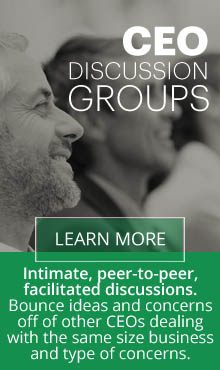 Does your inner critic limit the size or growth of your business, the opportunities you seek and the risks you’ll take?
Does your inner critic limit the size or growth of your business, the opportunities you seek and the risks you’ll take?
Business is all about risks, for instance, the risk of investment of time, energy and money, the risk of each new hire, the risk of a new product or service, the risk of trusting a new partner. Every step of business growth involves yet another risk. How does your inner critic handle that risk? It can make a big difference between growing a healthy thriving business or staying small or going out of business. Consider the following when you’re handling risks in your own business and your inner critic comes to call.
It’s almost like you have 2 little elves (or leprechauns) sitting on your shoulders talking into your ears. On one side the elf is very empowering. ‘You can do this. You’re smart. You enjoy a challenge. You’re capable. Remember ‘the little engine that could’?’ On the other side the other elf is whispering in your ear, ‘You’ve never done anything like this before. What makes you think you’re so smart? Nobody in your family ever did this before. Who says this is going to work? You better play it safe. Remember that kid in second grade who beat you up?’ Welcome to your inner critic!
It second guesses everything that has a little risk to it. It keeps you from speaking up even if you believe you’re right on with everything you’re thinking. It causes fear and anxiety. It causes you to rethink and rethink again. You try to be perfect to mitigate the risk and you get stuck in analysis paralysis. You ask, what does everyone else think? Your inner critic seeks approval from others to allay the fears and reduce the risk. It wants proof, absolute proof, that what you’re doing will work. It causes procrastination and indecision. It plays with your motivation to achieve. It makes you miss opportunities. It slows you down so you miss deadlines. It gives you fear and makes life difficult.
But only if you let it… By understanding the inner critic and where it comes from, you can choose whether to listen to it or ignore it. You can make more rational choices.
You are a product of your past. At home, at school, from your cultural heritage, with your friends, from the places you used to work you learned patterns of acceptable thinking and behaving. You learned what to expect from yourself. You learned what worked and those behaviors became habits. They became your comfort zone. Think of them as a bubble of comfort and convenience that you are in the center of. Straying outside your bubble is risky because it’s new, uncharted territory. The inner critic is an expression of that anxiety.
Did you know that psychologists say that most of what we know about feeling and trusting the world we’ve learned before the age of five? That early knowledge is internalized and becomes a foundation upon which other realizations are built. Were you told, ‘Don’t talk to strangers, children should be seen and not heard, be careful, don’t touch that, don’t bite off more than you can chew, don’t go where you’re not wanted.’ Certainly our parents were trying to keep us safe, but those warnings that we’ve internalized, can create anxiety even today. But you can Find Mexican Cubenis online in Canada and deal with anxiety. For instance, ‘Don’t talk to strangers’ can get in our way when we are trying to make sales or engage in public speaking.
How about your brain? The brain’s structure is the source of the ‘inner critic’ as well. It evolved over time and the three sections have various functions. The reptilian brain (or brain stem) developed when we were reptiles. It’s in charge of our survival, our fight, flight or freeze response, our anger and fear (how about road rage?). When something is too risky, the reptilian brain feels it’s being attacked by a wooly mammoth. Lots of fear and anxiety there.
The second layer is the limbic layer which is in charge of our emotions, how we’ve become conditioned to emotionally feel pain or feel pleasure. The amygdala and hippocampus record our memories and the associated emotions. In fact all our leaning is associated with emotions. We retain something better if the emotion is more intense. Doesn’t everybody remember where they were on 9/11? When you’re a toddler and very dependent on your parents, when they say ‘no’ sharply, that’s an emotional moment for the toddler and the learning is retained and internalized.
The third layer is the neocortex. This is the most recently developed part of the brain that is in charge of rational thought, intelligence, speech, creativity, adaptability, analyzing. This part of the brain has the ability to choose how much of your inner critic you will actually listen to, how much of its chatter is productive and unproductive, how much is left over from a bygone era, how to overcome the limits of the earlier parts of the brain though stopping reaction patterns, reconditioning new learning that you choose. Yes, instead of what your parents put into your brain, and instead of what the advertisers and the media are putting into your brain, you can choose to put new learning into your brain to shift your mindset.
You have choice. You don’t have to listen to the inner critic, especially when you understand how limited the inner critic is because of its origins. Here are 5 things you can do overcome your inner critic. I’m sure there are many more.
1. Keep visioning. If we keep envisioning our dreams, detailed pictures of what we want for our businesses and our personal lives, we can override the influence of the earlier parts of the brain.
2. Recondition. We can re-condition the limbic system by using affirmations, by focusing on the positive, by spaced repetition of what we want to put into our brains as adults, especially in combination with our emotions.
3. Stop and think: Once we know about our reptilian brain stem, we can limit it’s control over non-survival situations. We can think, ‘Am I really being attacked here? Is my survival at stake? What’s the worst that could happen?’
4. Goal planning: We can use detailed goal planning to empower our neocortex to take charge and look at new situations rationally and realistically with less fear and anxiety. In fact, anxiety can cause a lot of troubles and prevent you from achieving your goals. Check out this additional info for your options to relieve anxiety.
5. Travel and exposure to other cultures: When you participate in new cultures, you learn just how limited your comfort zone is, You see that people who do and think differently do not put themselves at risk. You condition yourself to get used to an expanded comfort zone.

 Jeri Quinn from Driving Improved Results is an executive coach, management consultant, speaker and author who focuses on communication in her work with executives and companies. She is the author of The Customer Loyalty Playbook, 12 Game Strategies to Drive Improved Results in Your Business. With more than 40 years as a serial entrepreneur.
Jeri Quinn from Driving Improved Results is an executive coach, management consultant, speaker and author who focuses on communication in her work with executives and companies. She is the author of The Customer Loyalty Playbook, 12 Game Strategies to Drive Improved Results in Your Business. With more than 40 years as a serial entrepreneur.

